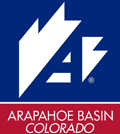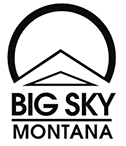What OpenSnow is Forecasting for the 2017-2018 Ski Season
2017-2018 Ski Season Forecasts
I forecast snow for skiers and riders. I love my job, which is to present the best snow forecasts on OpenSnow.com. Based on both my experience doing this for the past 10 years, as well as statistical analysis by many in the weather-forecasting industry, weather forecasts are getting more accurate in the 1-10 day time range.
One area where forecasts are not reliable, however, is in the 3-6 month time range. Lots of people are trying very hard to make accurate predictions about how a certain season will shape up, such as summer temperatures or winter snowfall. However, there is no service that I know of that consistently creates accurate 3-6 month snow forecasts for the winter.
For example, looking back at last winter, 2016-2017, here is is the official NOAA precipitation forecast. The forecast is on the left, and the actual precipitation that occurred is on the right.

Notice that the forecast showed above-average precipitation in the northern Rockies and Great Lakes. In actuality, most of the country saw above-average precipitation, with record-snowfall in California.
Many people ask me if the Farmer’s Almanac is correct, and my reply is “not more than anyone else”. Here is their forecast from last season, compared to what actually happened.

The Farmer’s Almanac also got it wrong in California and across most of the west. No, California was not “Cold, Dry”, it was super snowy!
For the last few minutes, you just read about how meteorologists and other forecasters cannot reliably forecast snow 3-6 months in advance. But of course, I know what you’re wondering right around now: “What will the snow be like this upcoming season?” Sorry, I cannot reliably answer that question.
But, I am happy to show you two ideas of what might happen this season, even though the forecasts I show are unlikely to be exactly correct.
First, we are trending toward a La Nina season. This means that water temperatures in the central Pacific Ocean are a bit cooler than average. These cooler temperatures change the storm tracks across the world, in somewhat reliable ways, so it gives us a clue about what might happen this season.

The image above shows average storm tracks during a La Nina season. You can see that they favor the northwest and northern Rockies. Also, since cooler air usually resides to the north of the storm tracks, most of the midwest and northwest should be cooler-than-average.
Indeed, when we look at the average forecast from a few long-range weather forecasting models, they show about what we’d expect from the typical La Nina storm tracks. The green areas show the best chance for above-average snowfall, which is in the northwest, northern Rockies, and midwest and northeast.

Wrapping this together, remember that 3-6 month forecasts are not reliable, but if you forced me to give a prediction, I’d say that the northwest and northern Rockies will see great snow, and areas like Tahoe, Utah, and Colorado will be on the fence.
Even though 3-6 month forecasts are not reliable, you should pay close attention to forecasts in the 1-10 day range. Between about 7-10 days, begin to trust the trend of the forecast (snowy and cold, or warm and dry, etc), and then between about 3-5 days, begin to trust the details of the forecast, or in other words, this is the time to start planning exactly where to go for a powder day.
For reliable 1-10 day forecasts, and expect analysis by our team of local weather forecasts, head to OpenSnow.com or our mobile apps for iPhone and Android, create an account, select a few favorite mountains, and follow the forecast to score your next powder day.
JOEL GRATZ
– Founding meteorologist at OpenSnow.com
Featured Resorts

Killington Resort

Pico Mountain

Mammoth Mountain

Palisades Tahoe

Arapahoe Basin

Aspen Snowmass

Sugarloaf

Sunday River

Big Sky

